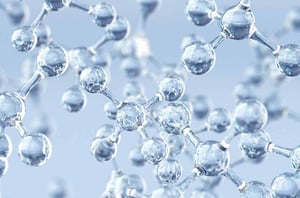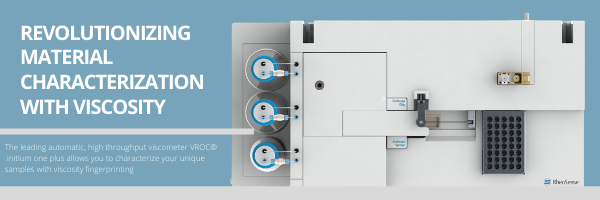Hyaluronic Acid (HA) is a molecule that naturally occurs in our skin that binds water to collagen, helping to hydrate skin. While HA is most abundant in our skin, it is also plentiful in the eyes and synovial joint fluid. HA can bind up to 1000 times its weight in water. Because of its natural hydrating capabilities, it is commonly found in cosmetic serums, moisturizers, eye drops, and even injections.

As previously noted, HA is commonly used in cosmetic serums and moisturizers. As we age our skin loses hydration due to the natural aging process and daily damage caused by exposure, such as ultraviolet radiation from the sun. Utilizing serums that apply HA to the skin can help to combat the effects of our natural aging and exposure through rehydration, making the skin appear smoother.
HA is also often used in eye drops formulated to relieve dry eye because of the ability of HA to retain moisture. It is also used in eye drops are also used during eye surgery to “reduce inflammations and speed healing” (PubMed).
HA is a component in natural joint fluid and is used in artificial synovial joint fluid. A healthy knee joint can contain up to 4 mL of joint fluid - Hyaluronic acid is a key component! Those who suffer from loss of natural joint fluid can experience pain relief through the use of HA joint fluid supplements or injections. It is important to maintain the high fluid viscosity and normal integrity of the joint (successfully achieved with high levels of Hyaluronic acid.
HA polymers occur in a vast number of configurations and shapes, depending on their size, salt concentration, pH, and associated cations (Papakonstantinou et al. 2012). The benefits of hyaluronic acid on the skin has to do with its molecular weight and concentration, meaning the size of is critically importance for its various functions. (Simple Skincare Science). HA is primarily used in personal care formulations for its humectant properties since it can bind with many times its weight in water. Multiple studies have found that HA with molecular weight between 50 to 1,000 kDa is the most beneficial for skin, as solutions with a low molecular weight can penetrate the skin and cause irritation or inflammation, and solutions with higher molecular weight do not have additional benefits (Healthline).
Various [HA] molecular weights are available from about 10,000 to several million Daltons. A specific molecular weight can be chosen to achieve a desired level of rheology modification and/or ability to penetrate various tissues such as the skin. The rheological behavior of HA solutions is easily tuned with molecular weight, concentration, and ionic strength. It is important to assess the rheological response at appropriate temperatures and shear rates. Since many of the applications involve introducing the formulation onto the skin or into the eyes, both room and body surface temperatures are relevant to performance. A broad range of shear rates are also of interest due to processes such as insertion and blinking for the ophthalmic solutions and dispensing and spreading for the skin care products.
Because of these water binding capabilities, HA solutions will typically have a high viscosity. Since viscosity is a function of molecular weight, absolute viscosity and intrinsic viscosity both reflect changes in molecular weight. Mark–Houwink–Sakurada (MHS) equation is used to calculate molecular weight from intrinsic viscosity and the Einstein-Simha equation is used to determine hydrodynamic radius, or size, of molecules.
Learn more about molecular characterization with intrinsic viscosity.
With the RheoSense VROC® initium one plus, molecular size can be calculated from the intrinsic viscosity measurement even if the media contains other protein molecules. The VROC initium one plus measures viscosity for sample volumes as small as 26 microliters with the highest accuracy (2% of reading) and repeatability (0.5% of reading). The intuitive software of the VROC initium one plus allows automatic testing of samples on a 96 well plate or a 40 vial rack.
Flow channel geometry can be varied to produce different types of continuous deformation. VROC microfluidic flow channels are available with a uniform cross-section for steady shear viscosity measurement or a centrally located hyperbolic contraction-expansion for extensional viscosity estimation. Download our new application note, measuring hyaluronic acid solutions both types of channels to illustrate the differences in fluid response between the two types of deformation.
Written by: Eden Reid, RheoSense Senior Marketing and Sales Operations




